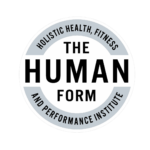How To Perform A Perfect Turkish Get Up Part 2
The Turkish Get-Up (TGU) is among the rare exercises that works on Stability, Mobility and Strength all at the same time. In our TGU Part 1 video, we covered the first foundational movements of the TGU. In case you missed that crucial first piece, please review that video below: Now in this second video, “Kettlebell King” […]
How To Perform A Perfect Turkish Get Up Part 2 Read More »
